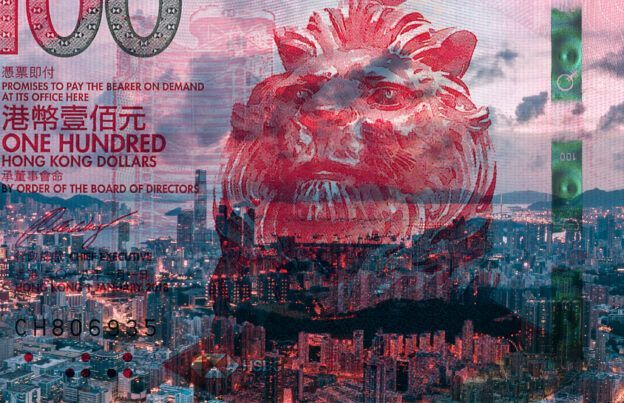Finally, we’re back with #WorldMoneyModay! Today we will be focusing on Hong Kong and the Hong Kong 100 Dollars Banknote from 2018. A country with a diverse culture, and a banknote to mirror it.
Hong Kong, officially the Hong Kong Special Administrative Region of the People’s Republic of China, is located on the eastern side of the Pearl river in Southern China. Hong Kong has over 7.4 million inhabitants, making it one of the most densely populated places in the world.
Although being a part of China, Hong Kong became a colony of the British Empire after the Qing Empire ceded Hong Kong Island at the end of the First Opium War in 1842. The territory was returned to China in 1997 after extending the 99-year lease of the New Territories. Today, they have a special administrative region which grants them separate governing and economic systems. Their principle is, “One country, two systems.” Hong Kong started out being a sparsely populated area for farming and fishing and has now grown into a powerhouse full of financial centers and commercial ports. Hong Kong is a highly developed territory, helping it become the tenth-largest exporter and ninth-largest importer in the world.
Hong Kong 100 Dollars Banknote from 2018
Hong Kong’s banknotes have a history of being extremely symbolic to their Chinese and British foundation. From different historical figures, monuments, and landmarks, it can be seen that Hong Kong represents each country in their own way. Surprisingly, unlike most other countries, Hong Kong has separate banks printing their banknotes, however they are controlled by the Hong Kong Monetary Authority.
On the obverse of the Hong Kong 100 Dollars Banknote from 2018, is a lion head. On the reverse, which also has a vertical orientation, is a image from an Cantonese opera. The Lion holds a huge importance in Hong Kong’s history. The lion symbolizes the British and Chinese roots of Hong Kong. Various headquarters and branch buildings in Hong Kong feature a pair of lion sculptures. The lion is such a big deal that Hong Kong even has mountain named “Lion Rock Hill”, a rugged mountain with an extremely difficult hiking trail accessible to people. The island symbolizes the beginning of the colony and represents the mountainous geography of Hong Kong. Even the HKAM (Hong Kong Academy of Medicine) felt that China needed a symbol of autonomy that they all could follow, the lion was chosen. The Lion Rock represents and even looks a little like a lion.
The History of the Cantonese Opera
On the reverse of the banknote is a snapshot of a Cantonese Opera. Beginning in the early 1950s, immigrants fled to Shanghai which almost immediately boosted the Cantonese opera fan base. The Cantonese opera was used as a platform to deliver the message of socialist revolution to the people of China. The government plaster the operas in newspapers and other forms of propaganda. This boosted the popularity of Cantonese Opera among the Hong Kong audience. Over time, Cantonese Opera became a part of daily entertainment. Out of all the artistic activities in Hong Kong, perhaps none is more overlooked than the traditional Cantonese Opera. It makes complete sense to have it featured on the 2018 banknote series.
“One of the major categories in Chinese opera, originating in southern China’s Guangdong Province. It is popular in Guangdong, Guangxi, Hong Kong, Macau and among Chinese communities in Southeast Asia. Like all versions of Chinese opera, it is a traditional Chinese art form, involving music, singing, martial arts, acrobatics, and acting.’
Wikipedia, 2016
